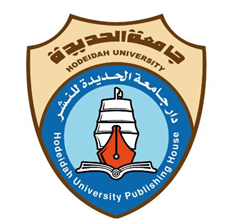Improvement Of Digital Criminal Prosecution In Combating E-Cotion Crimes
DOI:
https://doi.org/10.59846/ajbas.v3i1.636Keywords:
digital criminal prosecution, digital Evidence, Artificial Intelligence, Machine LearningAbstract
Although the prosecution of large-scale crimes at the international level shares some similarities to the prosecution of organized crime at the national level, there are a number of important differences that make the two areas hardly comparable. The use of Machine Learning in the field of justice aims to make a machine capable of understanding legal text. In morocco, The public prosecution Judges is responsible for representing the community and defending its rights before the courts, and ensuring that the basic interest are respected when the case is brought. The conflicts in Syria and Iraq, being some of the most documented in history, have also led to one of the largest influxes of refugees to Europe in recent years. Consequently, criminal investigations have been initiated by the local police with the aim of prosecuting those responsible for genocide, war crimes and crimes against humanity committed in Syria and Iraq. With an increasing number of war crimes prosecutions in European domestic courts relating to the atrocities committed, documented and shared by returning fighters, domestic authorities are compelled to find ways to effectively collect, process, analyses and share the user-generated data. This article discusses the ways in which digital evidence related to the conflicts in Syria and Iraq, particularly online open source materials, We will establish a dataset of complaints and processing in order to extract important information's and characteristics that can determinate judge's decision.
References
Benjamin E. Lauderdale and Tom S. Clark. (2012) “The supreme court’s many median justices”. The American Political Science Review, Vol. 106, No. 4 (November 2012), page.847-866.
Jeffrey A. Segal. (1984). “Predicting Supreme Court Cases Probabilistically: The Search and Seizure Cases.” The American Political Science Review, Vol. 78, No. 4 (Dec., 1984), page. 891-900. Kong JM; Goh NK; Chia LS; Chia TF (2003) recent advances in traditional Plant drugs and orchids. Acta Pharmacologica Sinica, 24: 7-21.
Ulmer S.Sidney (1963) “Quantitative Analysis of Judicial Processes: Some Practical and Theoretical Applications.” Law and Contemporary Problems, page. 164-184.
Nikolaos Aletras, Dimitrios Tsarapatsanis, Daniel Preoµiuc-Pietro and Vasileios Lampos. (2016) “Predicting judicial decisions of the European court of human rights: a natural language processing perspective.” PeerJ Computer. Science
Octavia-Maria Sulea, Marcos Zampieri, Mihaela Vela and Josef van Genabith. (2017) “Predicting the Law Area and Decisions of French Supreme Court Cases.” Proceedings of Recent Advances in Natural Language Processing, pages 716-722.
Wenhan Chao, et al. (2019) “Interpretable Charge Prediction for Criminal Cases with Dynamic Rationale Attention.” Journal of Artificial Intelligence Research 66 (2019): 743-764.
Zhang et al. (2021) “Legal judgment prediction based on computer topology learning and fact elements.”
Chao-Lin Liu and Chwen-Dar Hsieh. (2006) “Exploring Phrase-Based Classification of Judicial Documents for Criminal Charges in Chinese.”
Bingfeng Luo, Yansong Feng, Jianbo Xu, Xiang Zhang and Dongyan Zhao. (2017) “Learning to Predict Charges for Criminal Cases with Legal Basis”. Proceedings of the 2017 Conference on Empirical Methods in Natural Language Processing, pages 2727-2736.
Haoxi Zhong, Zhipeng Guo, Cunchao Tu, Chaojun Xiao, Zhiyuan Liuy and Maosong Sun. (2018) “Legal Judgment Prediction via Topological Learning.” Proceedings of the 2018 Conference on Empirical Methods in Natural Language Processing, pages 3540-3549.
Hu Z, Li X, Tu C, et al. (2018) “Few-shot charge prediction with discriminative legal attributes” Proceedings of the 27th International Conference on Computational Linguistics, page 487-498.
Liu Zonglin, Zhang Meishan, Yan, Gong Zuoquan, Yu Nan, Fu Guohong. (2019) “Multi-task learning model for legal judgment predictions with charge keywords”. Journal of Tsinghua University (Science and Technology) Volume 59 Numéro (7): 497-504.
Long S,Tu C, Liu Z, et al. (2018) “Automatic Judgment Prediction via Legal Reading Comprehension.” Chinese Computational Linguistics pp 558–572.
Fanglong Yao, Xian Sun, Hongfeng Yu, Wenkai Zhang, Kun Fu (2020) “Commonalities-, specificities-, and dependencies-enhanced multi-task learning network for judicial decision prediction.”Neurocomputing 433
page169–180.
Downloads
Published
How to Cite
Issue
Section
License
Copyright (c) 2024 Abeer Al-othary, Gameil S.H. Ali, Hafsa Al-Barmani, Altaf Al-Hag, May Jila, Sheema Al_saidy, Doaa Bagsh

This work is licensed under a Creative Commons Attribution 4.0 International License.





